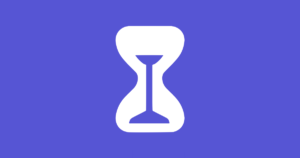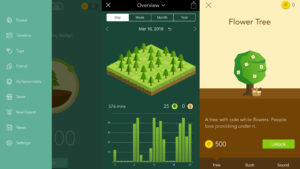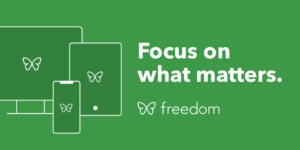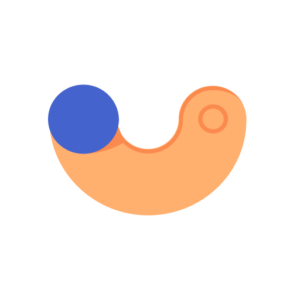Hi! I am back! Took a digital detox, it was incredibly important that I took a break from all that was going online, for my own well-being. I wanted to share with you all as to how to go about doing it and not feel missed out.
In today’s fast-paced world, digital technologies have become an integral part of our daily lives. We use smartphones, laptops, tablets, and a multitude of online services for work, communication, entertainment, and much more. While these technologies offer tremendous benefits, they also come with challenges that can affect our overall well-being. It’s essential to strike a balance between our digital and real-world lives, and that’s where the concept of digital well-being comes into play.
What is Digital Well-being?
Digital well-being is a concept that has gained prominence in recent years as we’ve witnessed an increasing reliance on digital devices and online interactions. It refers to the state of one’s mental and emotional health in the context of their digital activities. Essentially, it’s about fostering a harmonious relationship with technology to ensure that it enhances our lives rather than detracting from it.
The Need for Digital Well-being
The need for digital well-being has grown significantly due to several factors:
1. Proliferation of Technology:
We live in an era where technology is omnipresent. From smartphones and social media to streaming services and gaming platforms, our digital options are seemingly limitless.
2. Screen Time:
The average person spends a considerable amount of time in front of screens, whether for work, entertainment, or communication. Excessive screen time can lead to issues such as eye strain, sleep disruption, and decreased physical activity.
3. Digital Addiction:
An over-reliance on technology can lead to addiction-like behaviors. Social media, online gaming, and constant connectivity can make it difficult to disengage from digital devices.
4. Mental Health Concerns:
Studies have shown that excessive use of social media and constant digital connectivity can contribute to feelings of loneliness, anxiety, and depression.
Given these challenges, nurturing digital well-being has become a priority in our digital age. But what can we do to achieve it? Let’s explore some actionable steps and strategies.
Strategies for Digital Well-being
A. Digital Literacy
Digital literacy is the foundation of digital well-being. It involves understanding how technology works, recognizing the potential risks, and using digital tools responsibly. Here are some ways to improve your digital literacy:
- Educate Yourself: Stay informed about the latest digital trends, privacy concerns, and cybersecurity best practices. Understanding how data is collected and used by online services can empower you to make informed decisions.
- Teach Children: Promote digital literacy among younger generations. Encourage responsible online behavior, teach them about the importance of privacy, and provide guidance on distinguishing reliable sources from misinformation.
B. Screen Time Management
Managing your screen time is a crucial aspect of digital well-being. Excessive screen time can lead to physical and mental health issues. Consider these tips for effective screen time management:
- Set Screen Time Limits: Many devices offer built-in features for setting daily limits on app and screen time. Use them to maintain a healthy balance.
- Take Breaks: Regularly take breaks from screens, especially during long work or study sessions. The 20-20-20 rule is helpful: every 20 minutes, take a 20-second break, and look at something 20 feet away to reduce eye strain.
- Digital Detox Days: Plan occasional digital detox days where you intentionally disconnect from screens and engage in offline activities like reading, hiking, or spending time with loved ones.
C. Mindfulness
Practicing mindfulness in the digital age involves being present and conscious of your online activities. It helps reduce stress and anxiety caused by constant digital distractions:
- Mindful Browsing: When using the internet, be mindful of your intentions. Are you browsing aimlessly, or do you have a specific purpose? Try to stay focused on your goals and avoid getting sidetracked.
- Notification Management: Disable non-essential notifications on your devices to reduce interruptions and distractions. This allows you to check your messages and updates when it’s convenient for you.
- Mindfulness Apps: Consider using mindfulness and meditation apps like Calm or Headspace to help you relax and stay centered amidst digital chaos.
D. Digital Detox
A digital detox is a conscious effort to temporarily disconnect from digital devices and online platforms. It’s a powerful way to recharge and regain a sense of control over your digital life:
- Scheduled Breaks: Set specific times for digital detox, like an hour before bedtime or a full day each week. During these periods, turn off your devices and resist the urge to check messages or social media.
- Unplugged Vacations: When you go on vacation, try to disconnect from work emails and resist the temptation to share every moment on social media. Instead, focus on fully experiencing your surroundings.
- Replace Digital Habits: Identify digital habits that don’t contribute positively to your life and replace them with healthier alternatives. For instance, if you find yourself constantly scrolling through social media, replace that time with reading a book or going for a walk.
E. Privacy and Security
Maintaining your online privacy is a significant aspect of digital well-being. It’s not only about protecting your personal information but also about reducing potential stress associated with online risks:
- Secure Your Accounts: Use strong, unique passwords for all your online accounts. Consider using a password manager to keep your login credentials safe.
- Two-Factor Authentication (2FA): Enable 2FA wherever possible to add an extra layer of security to your accounts.
- Avoid Oversharing: Be cautious about sharing personal information, especially on social media. What you post online can have long-lasting consequences, and oversharing can lead to privacy breaches.
- Stay Informed: Keep up with cybersecurity news and trends to understand the latest threats and how to protect yourself. Following reputable cybersecurity blogs and news sources can help.
Now that we’ve discussed strategies for promoting digital well-being, let’s explore some popular apps that can assist you in achieving a healthier tech-life balance.
Popular Digital Well-being Apps
1. Apple Screen Time
Platform: iOS
App Usage Monitoring: Apple’s Screen Time lets you see how much time you spend on each app and category.
App Limits: Set daily limits for specific apps to help you cut down on screen time.
Downtime: Schedule periods when only essential apps will be available to use.
Content & Privacy Restrictions: Control what content can be accessed and who can communicate with you.
2. Google Digital Wellbeing
Platform: Android
Dashboard: Provides an overview of screen time, app usage, and notifications.
App Timer: Set daily time limits for specific apps.
Wind Down: Prepares your phone for bedtime by reducing screen brightness and enabling grayscale mode.
Focus Mode: Temporarily pause distracting apps.
3. Forest
Platform: iOS, Android
Virtual Tree Planting: Stay focused by planting a virtual tree. If you use your phone during the set time, the tree dies, acting as a visual reminder to stay on task.
Rewards: Earn virtual coins for successful tree-growing sessions, which you can use to unlock new tree species.
Social Mode: Plant trees with friends to encourage each other to stay off your phones.
4. Freedom
Platform: iOS, Android, Mac, Windows, and more
Block Websites and Apps: Freedom allows you to block websites and apps on various devices.
Scheduled Sessions: Plan focused work sessions by blocking distractions during specific time slots.
Sync Across Devices: Freedom can sync your blocked list and schedules across multiple devices for a seamless experience.
5. Calm
Platform: iOS, Android
Meditation and Relaxation: Calm is primarily known for its meditation and relaxation content.
Sleep Stories: Listen to calming stories to help you sleep better.
Mindfulness Exercises: Incorporate mindfulness practices into your daily routine.
6. Moment
Platform: iOS, Android
Screen Time Tracking: Moment tracks your daily screen time and app usage.
Daily Limit Setting: Set daily limits for specific apps and receive notifications when you approach them.
Phone-Free Time: Schedule phone-free moments to reduce distractions.
7. Flipd
Platform: iOS, Android
Lock Phone: Lock your phone for a set period to prevent distractions.
Productivity Challenges: Participate in productivity challenges with friends to stay focused.
Customizable Locks: Customize your phone lock experience with different challenges and goals.
These digital well-being apps can assist you in achieving a more balanced relationship with technology. Whether you need to limit screen time, boost productivity, or simply find moments of tranquility in the digital chaos, there’s an app that can help.
Conclusion
Digital well-being is an essential aspect of modern life. To enjoy the benefits of technology while avoiding its pitfalls, it’s crucial to be digitally literate, manage screen time, practice mindfulness, and periodically detox from digital distractions. Protecting your online privacy is also integral to your well-being.
Furthermore, using digital well-being apps can be a powerful tool in your journey to maintain a healthy tech-life balance. Whether you’re an iOS or Android user, there are options available to help you manage your digital habits. In this digital age, nurturing digital well-being is not a luxury but a necessity. By following these strategies and integrating digital well-being apps into your daily routine, you can lead a more balanced and fulfilling life in the digital world. Remember, technology should serve us, not the other way around.




